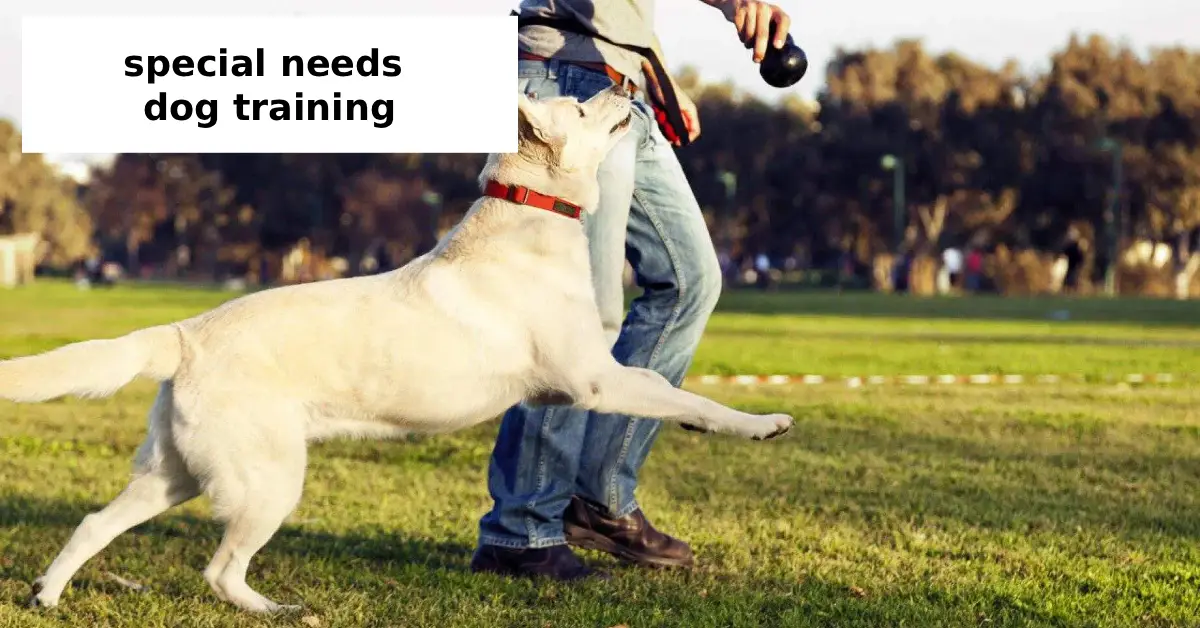When it comes to training dogs, one size doesn’t fit all—especially for dogs working with individuals who have unique physical, mental, or psychiatric needs. Special needs dog training is a highly specialized approach that focuses on preparing dogs to assist people with disabilities, provide emotional support, and even perform life-saving tasks.
This is not your average obedience class. It’s a blend of science-based training, compassionate handling, and customized plans designed to meet the specific needs of the person the dog will assist. Whether it’s a mobility assistance dog for a senior, an autism service dog for a child, or a PTSD service dog for a veteran, each case requires a thoughtful and tailored approach.
In this blog, we’ll explore what makes special needs dog training different, the types of assistance dogs trained, and why these programs are life-changing for so many.
Understanding Special Needs Dog Training
Unlike standard obedience training, this training is designed to prepare dogs for tasks that go beyond “sit” and “stay.” It’s about teaching dogs to assist in ways that directly improve the quality of life for their human partner. This could mean guiding a person with limited mobility, alerting someone with a medical condition, or providing comfort during an anxiety episode.
Training often involves:
- Task-specific learning – Dogs are taught skills tailored to their partner’s needs, such as retrieving medication or interrupting harmful behaviors.
- Behavioral reliability – The dog must perform consistently, even in distracting or stressful environments.
- Public access training – Many special needs dogs must navigate public spaces confidently and calmly.
Types of Dogs in Special Needs Training
1. Service Dog Training
Service dogs are trained to perform specific tasks for people with disabilities. They are recognized under many laws, such as the Americans with Disabilities Act (ADA) in the United States, and have public access rights.
Common roles include:
- Mobility Assistance Dog – Helps seniors or adults needing mobility support, opening doors, retrieving items, and providing stability.
- Medical Alert Dog – Alerts people with epilepsy, diabetes, or other medical conditions before an episode occurs.
2. Disability Dog Training
This branch focuses on training dogs to assist individuals with disabilities (physical, mental, or psychiatric). For example, a dog might be trained to assist a wheelchair user or support someone with balance issues.
3. Therapy Dog Training
Therapy dogs provide comfort and emotional support in schools, hospitals, nursing homes, and therapy centers. While they don’t have the same legal status as service dogs, they play a vital role in supporting mental and emotional well-being.
4. Autism Service Dog
For parents of children with special needs or autism, these dogs can help with:
- Preventing wandering
- Interrupting repetitive behaviors
- Providing deep pressure therapy during meltdowns
5. PTSD Service Dog
Veterans and first responders with PTSD benefit from dogs trained to:
- Interrupt panic attacks
- Provide grounding during flashbacks
- Wake the person from nightmares
6. Emotional Support Dog
While not legally classified as service animals, emotional support dogs help families seeking emotional support animals by offering companionship and comfort in challenging times.
Why Special Needs Dog Training is Unique
1. Customized Training Plans
A major factor that sets this training apart is the customized dog training approach. No two individuals have the same needs, so no two dogs are trained in exactly the same way. Trainers work closely with caregivers, healthcare providers, and sometimes even schools to design training programs.
2. Extensive Socialization
Dogs must be comfortable in all environments—crowded shopping malls, quiet libraries, busy hospitals—because they may need to assist in any of these settings.
3. Long Training Period
Unlike basic obedience, which may take weeks, special needs training can take 6 months to 2 years, depending on the complexity of the tasks and the dog’s temperament.
4. Bond-Based Learning
A deep bond between the dog and handler is essential. This trust ensures that the dog is motivated to help, even in high-stress moments.
The Role of Expert Trainers
Trainers and dog professionals specializing in service and therapy roles often have years of experience, certifications, and a strong understanding of canine behavior. Some also have experience in urban dog training, helping prepare service dogs for busy city environments.
These trainers work with:
- Caregivers and healthcare providers looking for assistance animals
- Schools and educational support staff for special needs students
- Organizations serving people with physical or mental impairments
How the Training Process Works
- Assessment – The trainer evaluates the dog’s temperament and suitability for service or therapy work.
- Foundation Skills – Basic obedience, focus work, and calm behavior in public.
- Task Training – Teaching skills like object retrieval, medical alerts, or guiding.
- Handler Training – Educating the person (and family) on handling, commands, and reinforcement.
- Public Access Test – Ensuring the dog can work in all types of environments.
The Emotional Impact of Special Needs Dog Training
It’s not just about tasks—it’s about emotional connection. For families with children who have autism, these dogs can create a sense of safety and comfort. For veterans with PTSD, they can restore a feeling of normalcy and reduce anxiety. For seniors, they can bring independence back into daily life.
The bond between a handler and their service or therapy dog often transforms both lives in profound ways.
Challenges in Special Needs Dog Training
While rewarding, this type of training is also challenging. Not every dog is suited for service or therapy work. Trainers must also ensure that the dog’s welfare is prioritized—overworking or overstressing a dog can cause burnout.
Another challenge is cost. Professional this programs can be expensive, but many non-profits and organizations provide financial assistance or fundraising support.
Maintaining Skills After Graduation
Once a dog completes training, ongoing practice is essential. Families and handlers are encouraged to do regular training refreshers to keep the dog’s skills sharp.
Conclusion: More Than Just Training
this is not simply about teaching commands—it’s about changing lives. From guiding individuals with disabilities to providing medical alerts or emotional comfort, these dogs are a bridge to independence, safety, and well-being.
Whether it’s a mobility assistance dog, a medical alert dog, or an autism service dog, the heart of this training lies in empathy, patience, and the unbreakable bond between human and canine.
If you’re considering this, work with experienced trainers who understand your needs, value your input, and always put the dog’s welfare first. In the right hands, these amazing animals can offer not just help—but hope.






1 thought on “What Makes Special Needs Dog Training Unique?”